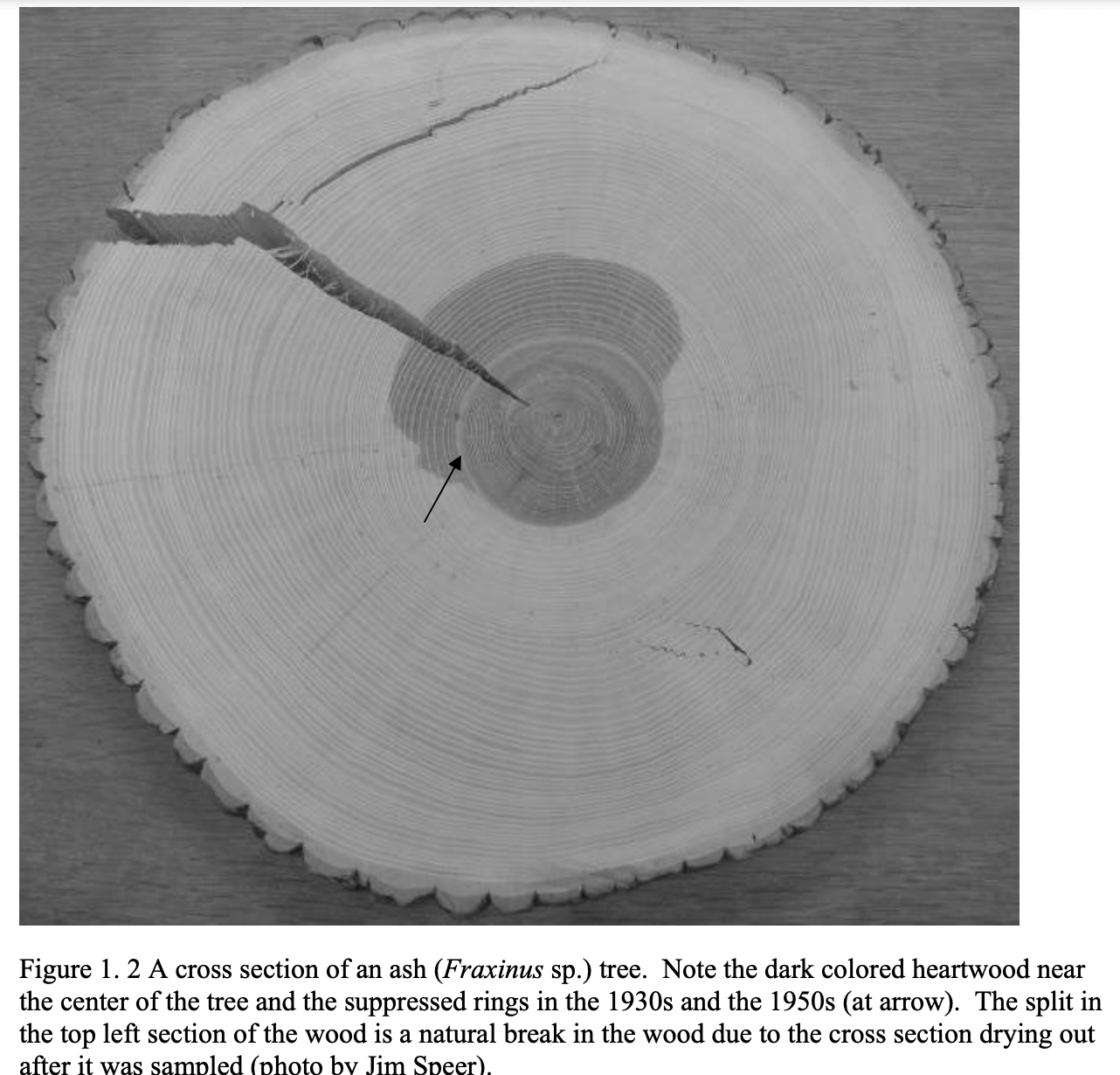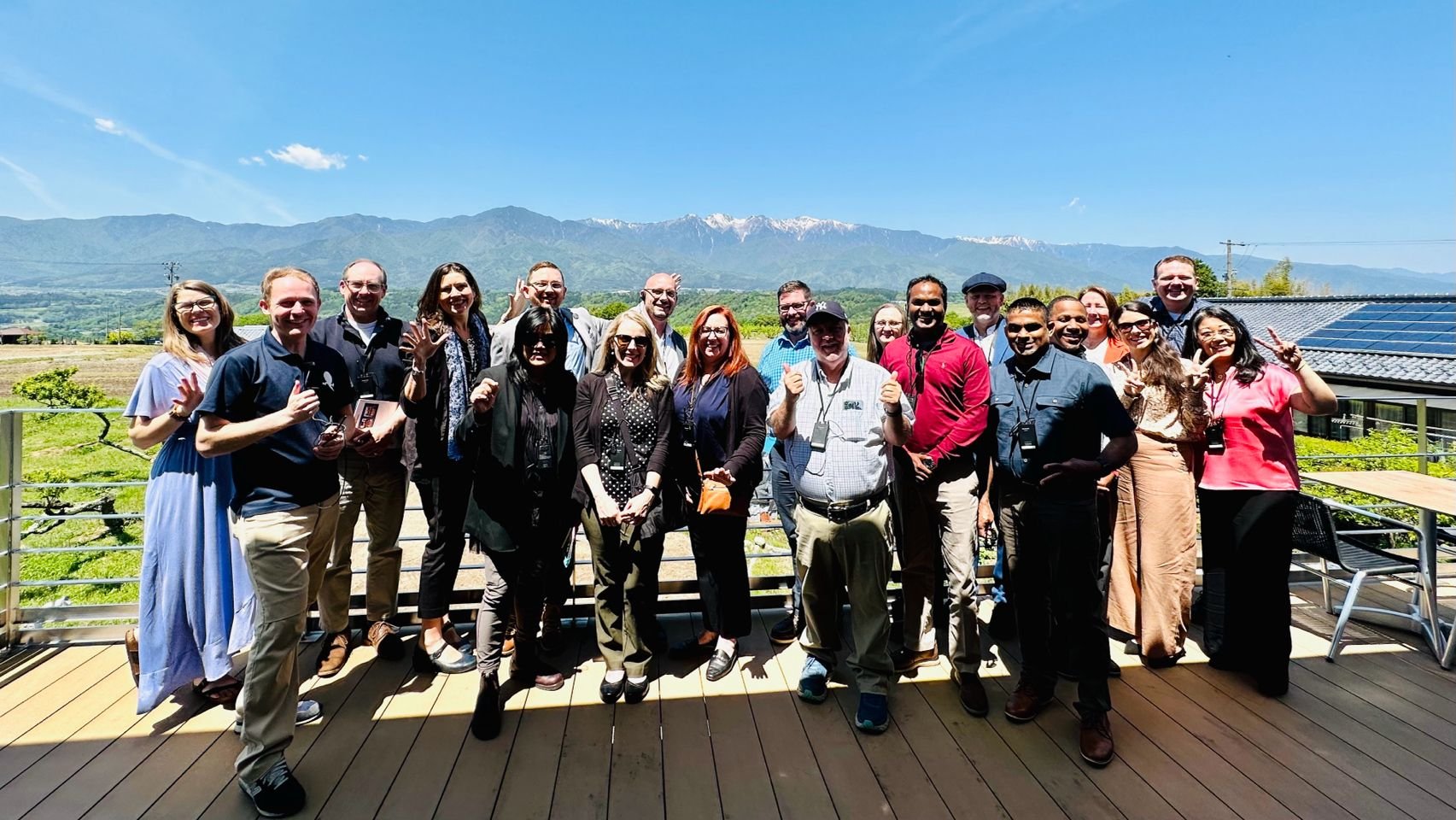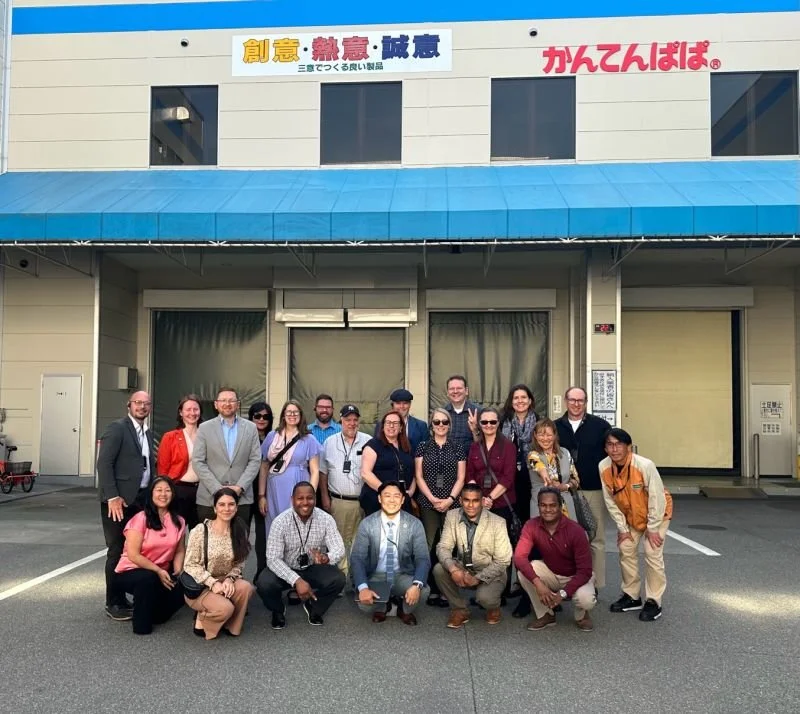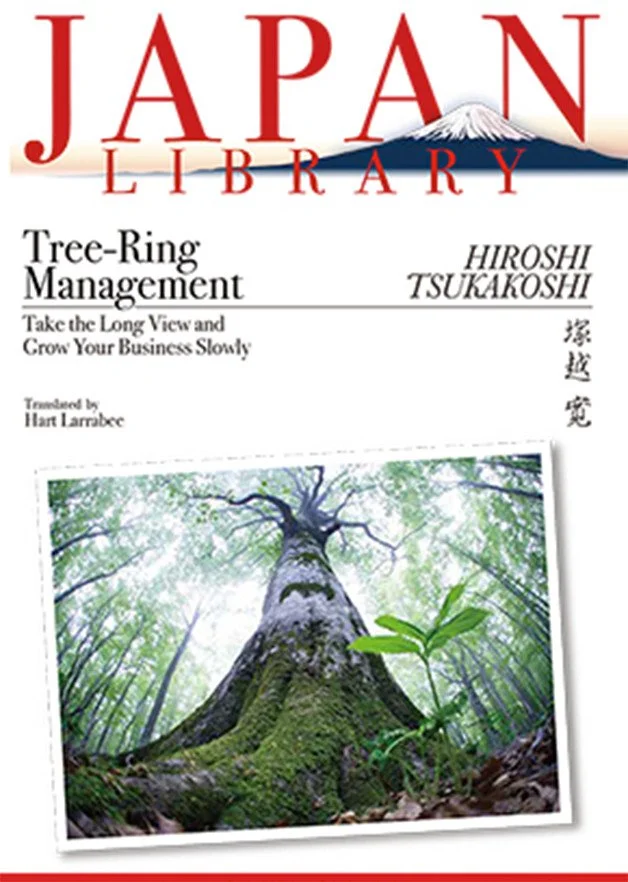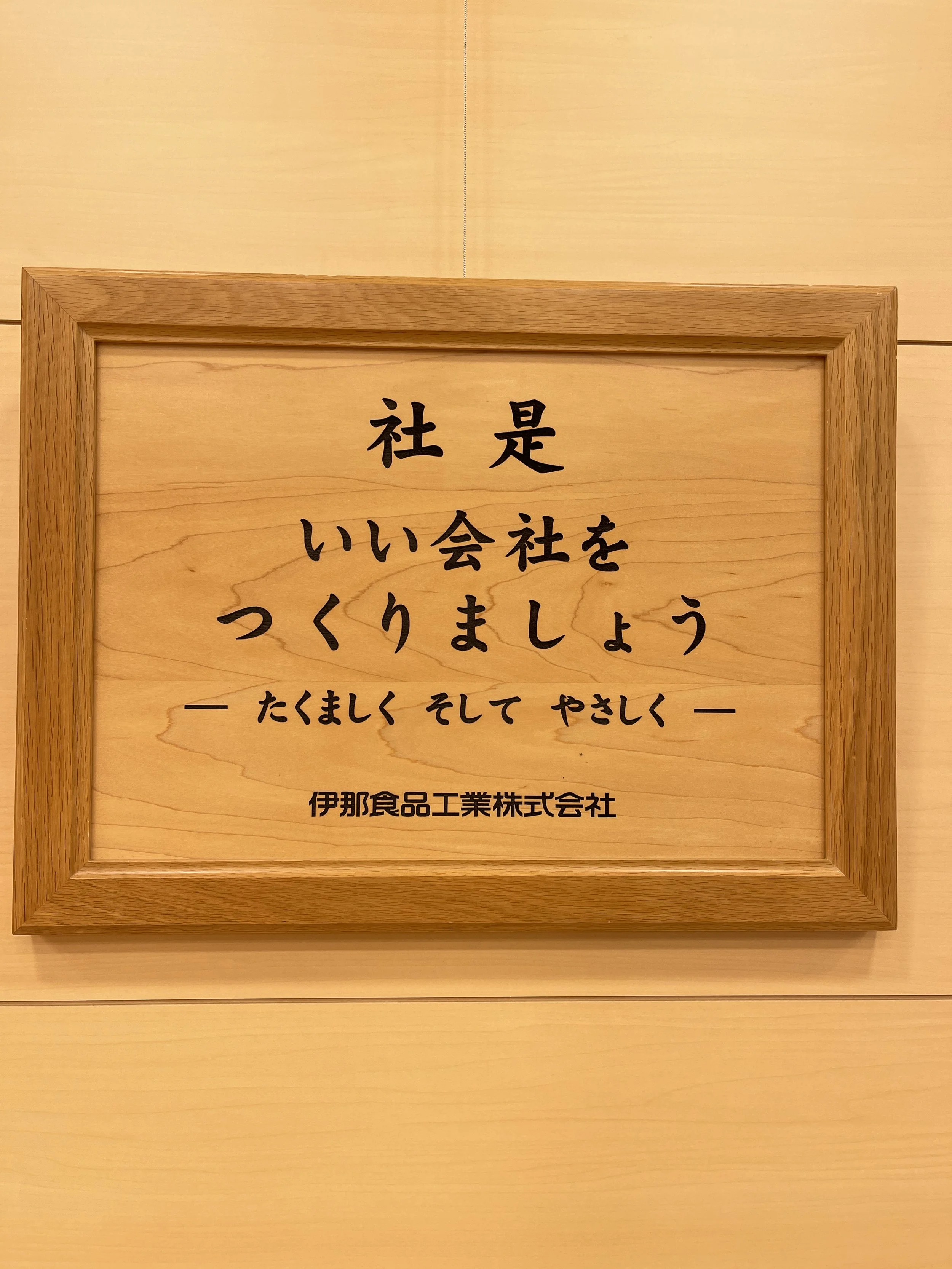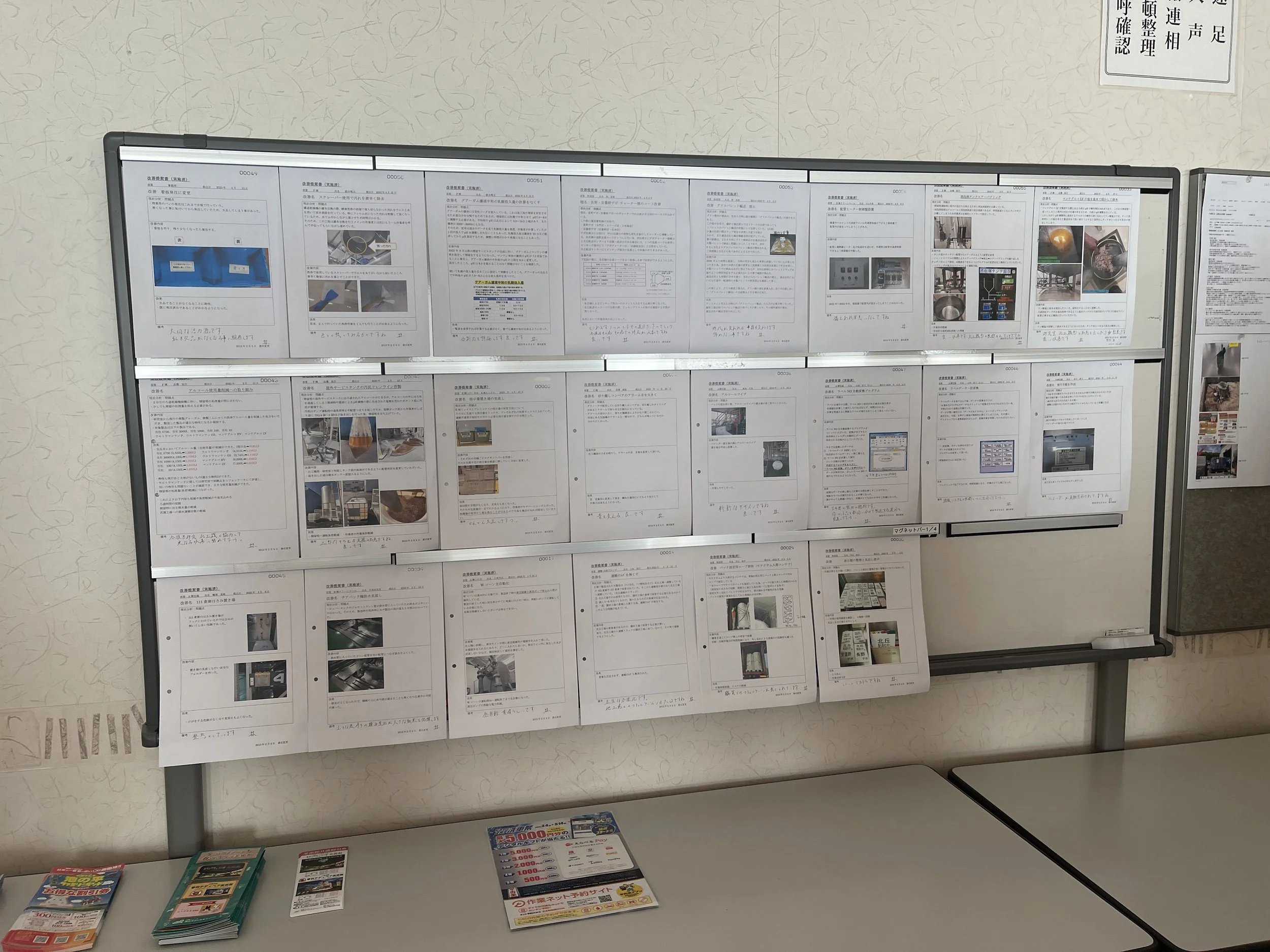Day Three - Katie Anderson's Japan Study Trip (part 1)
Today is the "Tree Ring Day." If you've ever seen a tree stump's top, you'll notice that it has a series of concentric rings. A tree's rings can tell us how old the tree is and what the weather is like each year. Each company we visited this week was like tree trunks. In some cases, the rings on their tree trunks are wide, while in others, they are narrow.
They all discussed their narrow rings through the 2008 financial crisis and COVID. Like a tree, they all survived throughout those years based on their philosophy of taking a long-term view. None of them laid anyone off. The companies were like trees in a forest that relied on symbiotic relationships to obtain nutrients and water. They all talked about the importance of their relationship with their community. They all hire young students from the community, and they give back to the community. Unlike Western companies I have visited over the years, they all had a tsunami-like attitude toward the future. You rarely hear an executive from a Western company discuss their worries about the future and their mitigation strategy. The Toyota suppliers specifically addressed the dangers of CASE "Connected" cars, "Autonomous / Automated" driving, "Shared", and "Electric.” Maybe behind closed doors with Wall Street investors, but not visitors to their plant.
All of the companies have these three meta traits in common:
Long Term Growth
A Commitment to Community
Pride in the Personal Growth of their Employees
The visit to Ina Foods today most inspired me. Ina Foods is a food company based in Japan that develops, manufactures, and sells powdered agar, gelatin products, and other powdered foods. In Japaense it's call Kanten. Ina Food Industry Co. Ltd is in Ina, Nagano Prefecture, Japan. They call this the Japanese ALPs.
A SAKE brewery owned by Ina Foods
Tree-ring management is a managerial philosophy that emphasizes taking a long-term view to decision-making and growing a business slowly and steadily.
Ina Foods Visit
Hiroshi Tsukakoshi, the chairman of Ina Food Industry Co., Ltd., has a management philosophy that focuses on creating companies that foster employees' happiness, thereby contributing to society. He believes that if the company focuses on establishing steady growth instead of just revenue, it will continue to exist for a long time, which will please everybody directly or indirectly associated with it. He also believes that Ina Food Industry Co., Ltd. is a new model for Japanese small and medium-sized businesses under a new management philosophy that brings happiness to employees and the community. It is based on the idea of a tree adding rings over time and the slow, steady expansion of operations over the long term. This approach enables companies to grow gradually but steadily over time. In 2015, Hiroshi Tsukakoshi published a book about his philosophy called Tree-Ring Management.
Here's an excerpt from the book.
What defines a "good" company? Is it simply the ability to increase sales and grow profits? Or is it something more fundamental? In Tree Ring Management, successful Japanese businessman Hiroshi Tsukakoshi argues that companies exist to make their employees happy, and profit is no more than a means to that end. To make employees happy, however, companies must endure. The key lies in what Tsukakoshi calls "tree-ring management": slow, steady expansion of operations over the long term, just like a tree adding rings. In trees, rapid growth makes for wider but weaker rings; similarly, Tsukakoshi writes companies should avoid rapid short-term expansion that might undermine their ability to provide for employees in the long term. This approach stands in stark contrast to the prevailing American model of management, which led to the financial crash of 2008 through the individualistic pursuit of enormous profit at any ethical cost.
According to Tsukakoshi, a company's primary goal is to make its employees happy. According to their management philosophy, slow, controlled growth is better than rapid growth. In his book, he describes a client visit to Ina Foods, where the taxi driver says, oh, you're going to Ina Foods; that’s a good company.
Translated “Let’s Create a Good Company” - This was on the wall in the board room.
A good company is built by following Tsukakoshi's ten rules for Building a Good Company:
Always produce good products.
Do not produce too much or sell too much just because you can.
Seek whenever possible to see at a fixed-price without offering discounts.
Seek to produce products and services from the customer perspective.
Create beautiful factories, shops, and gardens.
Develop refined packaging and advertisements.
Give back to the community by volunteering and by supporting culture and the arts.
Take care of suppliers.
Improve the company image by ensuring that everyone understands management policies.
Carry out the above faithfully over time.
Ina's notion of serendipity is one of the things Tsukakoshi discusses in his book. It describes how they find new opportunities. In their R&D lab, it's on the wall in English. Agar is the core component of Ina Foods. However, they invest ten percent in research and development to find new ways to produce agar-based products. Ina has found innovative ways to create new products within its existing market, just like the famous serendipitous 3M sticky notepad story.
The cafeteria where they have their Kaizen board.
We were shown the Kaizen process at the plant. Their kaizen approach is similar to that of the other companies we visited. Encouragement is given, but it is not forced. A few companies used cafeterias to visualize their boards. This is the best place to aggregate knowledge, according to the idea. Every employee is encouraged to produce one kaizen per month. There are about 100 kaizens per month at the plant we visited. The majority of them are minor changes. We saw an example where the supply they received was wrapped with a complicated rope. Each time a shipment is received, the rope must be unwound (Muda). It was suggested that the supplier not ship the rope with the material. Both companies tried the experiment and found they didn't need the rope.
Toyota got the idea for suggestions (kaizen boards) from Ford, according to Mr. Yoshino. Later, Toyota discovered Ford rewarded good suggestions financially. In his book Total Quality Control for Management, Maso Nemoto discusses intrinsic and extrinsic aspects of recommendations. You won't tip someone for holding a door open for you. In the best-case scenario, it would diminish the intrinsic joy of doing the favor. In the worst-case scenario, it would be disrespectful. Toyota and other Japanese companies missed Ford's memo about rewarding suggestions.
https://www.japan.go.jp/tomodachi/2018/winter2018/the_small_giant_tree-ring_management.html
Although this was in the book, it was when I saw the poster of their 100-year calendar that I realized what it meant. It gave me chills; it was so impactful to me. I bought one in their posters in the gift shop. Tsukakoshi sits down with every new employee and shows them his 100-year calendar in the introduction to Ina Foods video. He tells them that one of those days will be the best day of their life, so let's have a happy life together, says Tsukakoshi.
